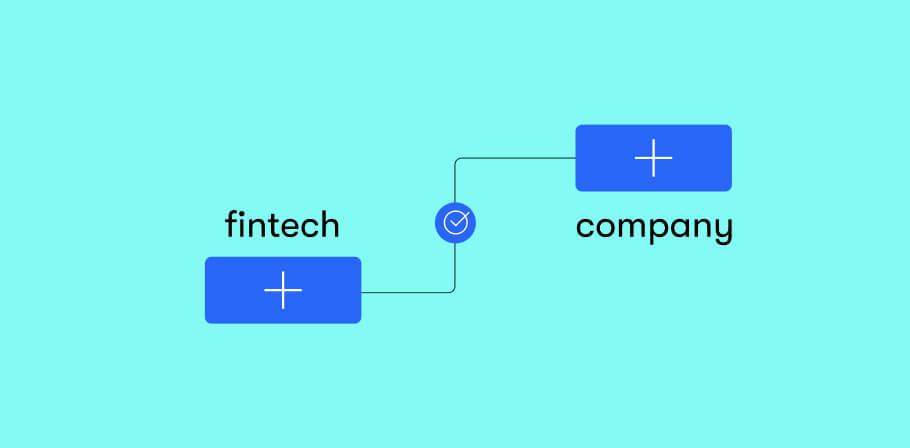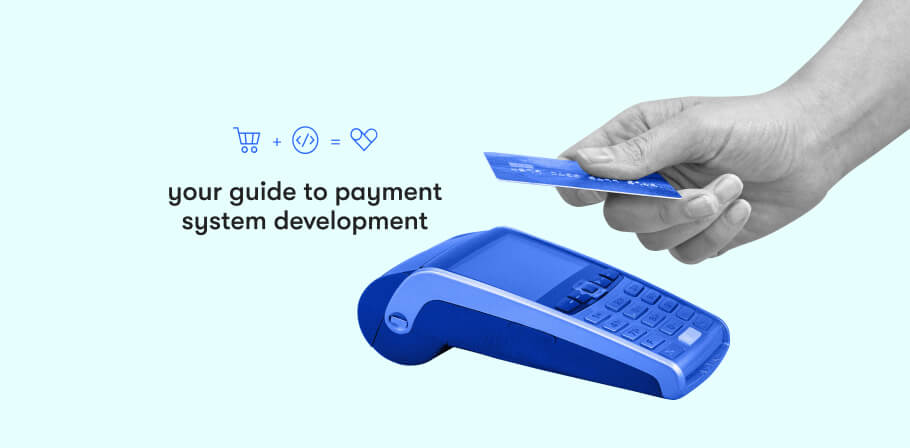In this comprehensive guide, we will explore the intricacies of creating an educational app. Whether you are an educator, entrepreneur, or tech enthusiast, you will find invaluable insights to turn your educational app idea into a thriving reality.
But before we delve into the specifics, let's deep-dive into the current landscape of the online learning app market.
Online learning app market size and growth
The online learning app market is experiencing a phenomenal surge, presenting many opportunities for educational app developers to thrive in this dynamic landscape. To gauge the immense potential of your educational app, it's crucial to explore this market meticulously.

Educational app market trends
The global online learning app market has been on an upward trajectory, showing no signs of slowing down. Several factors contribute to this remarkable growth:
- Proliferation of smart devices: The widespread adoption of smartphones and tablets has empowered learners by giving them easy access to educational content whenever and wherever they desire. The ubiquity of these devices has created a fertile ground for educational apps to flourish.
- Digital transformation in education: Educational institutions across the spectrum, from K-12 schools to higher education, have quickly recognized the potential of digital tools and platforms. This shift represents a fundamental transformation in the way education is delivered. These institutions increasingly incorporate technology into their curricula, further fueling the demand for educational apps.
- Lifelong learning: The concept of continuous learning has gained significant momentum. Today, professionals and enthusiasts seek knowledge and skills throughout their lives. As a result, educational apps are serving not only traditional students but also a vast demographic of lifelong learners who are eager to expand their horizons.
- Remote learning: The COVID-19 pandemic has accelerated the shift to online learning, making it a norm rather than an exception. What was once considered a supplementary educational approach has become a prevailing learning mode. Educational apps have played a pivotal role in ensuring continuity in education during these challenging times.
- Personalized learning: One of the most exciting trends in online education is the advent of customized learning. Adaptive learning algorithms powered by artificial intelligence are tailoring educational content to individual needs, making the learning experience more engaging, efficient, and effective. This trend is not only enriching the learning experience but also enhancing retention and mastery of skills.
Key market players
The online learning app market encompasses a diverse array of apps designed for various niches. Let's explore some notable market players right now:
Duolingo
Duolingo has emerged as a pioneer in the language learning app space, with millions of users worldwide. Offering courses in over 30 languages, Duolingo provides a gamified learning experience, making it appealing to beginners and advanced learners alike.
Coursera
Coursera caters to both individual learners and corporate clients. It offers a vast library of online courses, specializations, and degrees. Many businesses leverage Coursera to upskill their employees in various domains.
Zoom
While primarily known for its video conferencing capabilities, Zoom has become a go-to platform for remote education. It enables interactive and engaging online classes, making it a vital tool for educators and students.
ABCmouse
ABCmouse offers a comprehensive early learning curriculum for children. With interactive games, books, and activities, it provides a fun and educational experience for young learners.
Be My Eyes
Be My Eyes is a unique app that connects visually impaired individuals with sighted volunteers for assistance. It's an excellent example of an app that caters to a specific audience's needs.
LinkedIn Learning
LinkedIn Learning offers various courses to help adults acquire new skills and advance their careers. It's a valuable resource for professionals looking to stay competitive.
Khan Academy
Khan Academy is renowned for its extensive test prep materials. It provides free high-quality resources for standardized test preparation, making it a go-to choice for students aiming to excel in exams.
These examples represent just a fraction of the diverse educational app market. As learners of all ages seek quality education through digital means, the online learning app market continues to expand, presenting a wealth of opportunities for educational app developers.
To make your mark in this thriving landscape, it's essential to understand the intricacies of educational app development and tailor your app to meet the unique needs and preferences of your target audience.
TEAM UP WITH TOP LEARNING APP ENGINEERS
Our dedicated app development teams understand your niche and are backed with years of expertise.
Types of educational apps
Educational apps come in various forms and cater to diverse learning needs. Here are some of the key categories:
Language learning applications
These digital platforms are a gateway to unlocking the world by breaking language barriers. Language learning apps are cherished by both beginners looking to acquire new language skills and advanced learners seeking to master the target language. With many languages on offer, these apps use interactive methods and gamification to make acquiring a new language engaging and enjoyable.
Corporate learning management systems
In today's ever-evolving business landscape, the need for upskilling and knowledge enhancement is paramount. Corporate learning management systems have emerged as a solution to empower businesses to enhance employee skills and knowledge efficiently. These Agile platforms offer a wide range of courses, modules, and resources, making it convenient for organizations to invest in the professional growth of their workforce.
Remote tuition platforms
The advent of remote tuition platforms has shattered the geographical boundaries that once constrained traditional education. These applications have revolutionized how we learn, making it possible for students and teachers to connect from anywhere in the world. These platforms offer a seamless and interactive teaching and learning experience, bridging the physical gap between educators and learners.
Educational mobile apps for kids
Educational mobile apps designed for children are captivating and educational at the same time. These apps are specially crafted to engage young minds with interactive content that is both fun and instructive. From early learning fundamentals to more advanced subjects, these apps provide a safe and enjoyable learning environment for children.
Learning apps for disabled people
Ensuring inclusivity in education is a top priority, and learning apps for disabled individuals play a pivotal role in this endeavor. These apps are designed to empower individuals with disabilities, providing them with accessible and tailored learning experiences. Whether through adaptive technology or specialized content, these apps offer a bridge to education that is both enriching and accommodating.
Learning applications for adults
The pursuit of knowledge is not limited to youth; adults are also enthusiastic lifelong learners. Educational apps for adults cater to the intellectual curiosities and skill development needs of grown-ups. These apps offer a diverse range of courses and resources, enabling adults to stay competitive in their careers, explore new interests, and continue their personal and professional growth.
Test preparation apps
The pressure of standardized tests and exams can be daunting, and test prep apps come to the rescue of students striving for academic excellence. These apps offer comprehensive test preparation materials and resources, from practice questions to detailed study guides. With adaptive learning techniques, they help students effectively prepare for their exams, boosting their confidence and performance.
Must-have features of an educational application
Creating a successful educational app is not just about delivering educational content; it's about providing an immersive and user-friendly experience that enhances learning. To achieve this, there are essential features that your educational app should incorporate. These features serve as the building blocks of a seamless and engaging user experience:
Sign-up and login
The foundation of any personalized learning experience begins with user accounts. Users should be able to create and manage their profiles, enabling them to access personalized content, track their progress, and tailor their learning journey to their individual needs.
User profile
Allowing users to maintain and curate their profiles is critical to providing a personalized learning experience. Users can track their achievements, preferences, and progress, giving them a sense of ownership over their educational journey.
Admin panel
An efficient and well-designed admin panel is crucial for managing the app's content, users, and performance. It allows administrators to oversee user activity, monitor content quality, and make necessary adjustments to ensure a smooth operation.
Notifications
Keeping users informed is vital for maintaining engagement and retention. Notifications are an excellent way to update users about new content, events, important announcements, or their progress. These updates can help keep users motivated and informed.
Payment gateway
Monetizing your app is a significant consideration. A well-integrated payment gateway enables you to offer subscription plans, in-app purchases, or other payment options. This not only allows you to generate revenue but also provides users with access to premium content or features.
Analytics
Understanding user behavior and app performance is crucial for making data-driven decisions. Analytic tools can provide valuable insights into how users interact with your app, which content is most engaging, and where improvements may be needed. This data is indispensable for continuous app enhancement.
Learning materials
The heart of any educational app is its learning materials. Your app should offer a rich library of educational content, such as videos, quizzes, articles, and interactive lessons. These materials should be both comprehensive and engaging, catering to a variety of learning styles and preferences.
SPEED UP YOUR EDUCATIONAL APP DEVELOPMENT
Our dedicated app development team is ready to take your app to market quickly and confidently.
5 steps to build an educational app
Building an educational app that resonates with users and serves its intended purpose is a meticulous process that involves several product development stages and a clear timeline. By following these crucial steps, you can embark on a successful journey of educational iOS or Android app development:
Step 1: Discovery of information
The first step in developing an educational app is to gain a deep understanding of the educational landscape and your target audience. This includes conducting market research, identifying the needs of potential users, and assessing the competitive landscape. The insights gathered during this phase are crucial in shaping the direction and features of your app. They provide the foundation upon which your app will be built, ensuring that it addresses the specific needs of your users.
Step 2: Prototyping & design
Once you have a clear understanding of the educational app you want to create, the next step is to bring your ideas to life through prototyping and mobile app design. This is where the user interface and user experience (UI/UX) design come into play. A captivating and user-friendly design is essential for keeping users engaged and providing an effective learning environment. At this stage, consider incorporating gamification elements to enhance user retention and motivation.
Step 3: Development
With a well-defined concept and a compelling design in place, the phase of mobile app development begins. This is where your app transforms from a concept into a functional application. Whether creating a language learning app, a corporate training platform, or an educational tool for children, this stage involves coding, testing, and refining the app to ensure it meets your vision and serves your target audience effectively.
Step 4: Testing
Launching your app into the hands of users is an exciting step, but ensuring that the app works flawlessly is critical. Rigorous testing is vital to a successful app launch and should be initiated early in the project. Testing involves identifying and addressing any bugs, glitches, or performance issues. Thorough testing helps create a positive user experience and establishes trust with your user base.
Step 5: Deployment
After the application development and rigorous testing, it's time to deploy your educational app to the intended platforms. Ensuring a seamless launch requires careful consideration of platform-specific guidelines and submission processes.
How much does it cost to develop educational apps?
Developing an educational app isn't merely an investment in technology; it's a multifaceted journey that involves various cost variables. Let's unveil these variables, providing a comprehensive understanding of the factors influencing the cost of creating an educational app.
The following figures are market benchmarks and serve for your estimates only.
App complexity ($20,000-$50,000)
The complexity of your educational app is a foundational variable. It can range from essential features, such as content delivery and quizzes, to advanced interactive elements, personalized learning paths, and gamification. The complexity directly impacts the development hours and associated costs.
Choice of platform ($10,000-$30,000)
Choosing the platform for your educational app — iOS, Android, or both — significantly affects costs. Single-platform development is typically more cost-effective, while multi-platform development expands your potential user base but may require a larger budget. It's essential to consider your target audience and their preferred platforms.
Design and user interface ($5,000-$20,000)
User experience and design play a pivotal role in educational app development. The design encompasses graphics, animations, and responsive design, ensuring an intuitive and visually appealing user interface. The level of design sophistication impacts development costs.
Features and functionality ($20,000-$50,000)
The features and functionalities you incorporate into your app are a central cost variable. Basic features, like user profiles and content management, come with lower costs. In contrast, advanced features such as artificial intelligence (AI) integration, interactive simulations, and personalized recommendations require more development hours and, consequently, higher costs.
Testing and quality assurance ($5,000-$15,000)
Rigorous testing and quality assurance are crucial to ensuring a seamless user experience. Testing involves identifying and addressing issues to provide a reliable app. While it's a necessary cost, the depth and complexity of testing can influence the final budget.
Project location
The geographic location of your development team is a variable that can affect labor costs. Labor rates and market conditions differ by region. Offshore development can often be more cost-effective, but it's crucial to balance cost savings and the quality of work.
Monetization strategy
How you monetize your educational app is a variable with cost implications. Strategies such as in-app purchases, in-app advertising, affiliate marketing, and sponsored content can influence revenue and determine associated costs.
Summary: Developing an educational app involves a diverse range of factors that collectively determine the overall cost. App complexity, platform choice, design, features, and functionality contribute to an estimated cost of $60,000 to $215,000+. It's essential to weigh these variables carefully during cost estimation, recognizing that the investment in technology encompasses not only development hours but also user experience, design sophistication, and potential revenue streams.
USE OUR COST CALCULATOR
Get educational app development cost estimates in a few clicks.
Our best practices in educational apps
At EPAM Startups & SMBs, our journey in educational app development has been marked by a commitment to excellence, innovation, and delivering transformative solutions to our clients. Over the years, we've had the privilege of working on various educational apps, each with unique challenges and opportunities. Let's delve into some success stories to get a deeper understanding of how we've made a difference in the educational technology landscape:
Case 1: Driving digital courseware
We collaborated with a leading learning company to drive the digital transformation of their courseware and assessment solutions. We embarked on a journey to enhance the accessibility and effectiveness of their educational offerings. Leveraging our expertise in educational app development, we designed and developed innovative solutions that catered to the evolving needs of learners. Over the years, our collaborative work improved the learning experience for thousands of students and educators, making education more interactive, engaging, and outcome-driven.
Case 2: Transforming a STEM learning experience
STEM education is at the forefront of the future, and in this case, we had the privilege of partnering with a client to transform the STEM learning experience. We aimed to make STEM education more accessible, interactive, and appealing to students of all ages. We harnessed the power of technology to develop an educational app and platform that offered a hands-on learning experience. By combining cutting-edge technology with pedagogical expertise, the client enhanced STEM education, igniting the passion for science, technology, engineering, and mathematics in countless learners.
Case 3: Delivering omnichannel learning engagement
Our client sought a partner to deliver an authentic omnichannel engagement experience for its users. We collaborated to create a seamless, user-centric, and data-driven educational platform. Our solutions engaged learners across multiple channels, ensuring a consistent and personalized learning experience. The transformation we brought about not only enhanced user satisfaction but also contributed to the growth of the client’s business in the competitive educational technology landscape.
BUILD YOUR APP WITH A TEAM OF INDUSTRY EXPERTS
With 30+ years of engineering excellence, we are ready to upscale your team or deliver projects end-to-end.
What can we learn from top educational apps?
By unraveling the success secrets of top-performing educational apps, we gain invaluable insights into how they captivate their audience, drive engagement, and provide genuine educational value. These top educational apps have cracked the code for making learning not only practical but also enjoyable. From innovative content delivery to user-friendly interfaces, they've mastered the art of balancing education with user experience.
Innovative content delivery
One of the distinguishing factors of top educational apps is their approach to content delivery. They recognize that educational content should be more comprehensive than traditional text-based materials. Instead, they leverage a diverse range of content formats, including interactive videos, podcasts, quizzes, simulations, and gamified elements. This multifaceted approach ensures that learners of all types, whether visual, auditory, or kinesthetic, can engage with the material effectively.
User-centric design
Top educational apps prioritize user experience and design. They invest in creating interfaces that are intuitive, visually appealing, and easy to navigate. Whether the user is a child or an adult, the design is tailored to their needs and preferences. Additionally, these apps often employ responsive design to ensure a seamless experience on various devices, from smartphones to tablets and desktops.
Gamification for engagement
Gamification is a powerful tool that top educational apps use to boost user engagement. By incorporating game-like elements such as challenges, rewards, leaderboards, and badges, they make the learning experience more enjoyable and motivating. Gamification not only entices users to return to the app but also helps them track their progress and compete with themselves or others.
Personalization and adaptability
Personalization is a cornerstone of the success of top educational apps. They understand that every learner is unique, and more than one-size-fits-all approach is required. These apps employ AI-driven algorithms that analyze user behavior and preferences to tailor content and recommendations. Learners receive content that matches their proficiency level and adapts as they progress.
Community and social interaction
Learning doesn't have to be a solitary endeavor. Top educational apps foster a sense of community and social interaction among users. They include features like discussion forums, chat functions, and the ability to connect with fellow learners. This sense of belonging and collaboration enhances the overall learning experience.
Regular updates and fresh content
Top educational apps understand that content can become outdated and user preferences evolve. To keep users engaged and returning, these apps regularly update their content and introduce fresh materials. They also take user feedback into account when making improvements.
Accessibility and inclusivity
Inclusivity is a non-negotiable aspect of educational app development for the top players. They ensure their apps are accessible to disabled individuals, incorporating features like screen readers, adjustable font sizes, and voice commands. This commitment to inclusivity ensures that all learners, regardless of their abilities, can benefit from the app.
Data-driven decision making
Data is a treasure trove for top educational apps. They utilize advanced analytics to track user behavior, understand which content is most effective, and identify areas needing improvement. By making data-driven decisions, these apps continually enhance the user experience and educational outcomes.
Positive user feedback loop
Top educational apps actively seek user feedback and foster a positive feedback loop. They encourage users to provide input, whether through surveys, ratings, or direct communication. This feedback loop allows them to address issues promptly, acknowledge user suggestions, and commit to continuous improvement.
Mobile optimization
In a mobile-centric world, top educational apps are optimized for mobile devices. They offer seamless experiences on smartphones and tablets, recognizing that many learners prefer to access educational content while on the go.
Future-proofing
Leading educational apps have a forward-thinking approach. They monitor emerging technologies and trends, ensuring they can adapt and integrate new features or content formats. This proactive approach helps them stay ahead of the curve.
How to make a learning app profitable?
When starting an educational app development process, creating an app that imparts valuable knowledge is just one piece of the puzzle. Establishing a sustainable model for generating revenue is equally essential. Educational apps, while focused on learning, also need to support themselves financially to continue providing educational value to users. Let's delve into the various monetization strategies available and explore how an educational app can balance education and profitability.
Freemium models
Many educational apps adopt a freemium model, which offers a free version of the app with limited features and content. To access premium features or additional content, users can opt for in-app purchases or subscription plans. This approach allows users to experience the app before committing to paid content, making it an effective strategy to attract and convert users.
Subscription plans
Subscription-based models are prevalent in educational apps. Users pay a recurring fee to access the app's content and features. This model provides a steady revenue stream, allowing for continuous app development and content updates. It's particularly effective when the app offers ongoing courses, premium materials, or personalized learning paths.
In-app advertising
In-app advertising can be an attractive revenue source, especially for free educational apps. Advertisers pay to display their ads within the app, and the developer generates income from these placements. However, it's essential to balance advertising and the user experience to ensure that ads do not disrupt the learning process.
Paid apps
Some educational apps follow the traditional model of a one-time purchase fee. Users pay upfront to download and access the app. This approach is straightforward and provides immediate revenue but may limit the user base, as some users may hesitate to pay before trying the app.
Affiliate marketing
Affiliate marketing involves promoting educational products, services, or resources within the app. When users purchase through affiliate links, the app developer earns a commission. This strategy is beneficial when the app's audience is inclined to purchase related educational products or services.
Donations and crowdfunding
Some educational apps rely on donations and crowdfunding to sustain themselves. Users who appreciate the app's value can contribute voluntarily to support its development. Crowdfunding campaigns can also provide financial backing for app improvements and new features.
Sponsorships and partnerships
Educational apps can secure sponsorships or partnerships with educational institutions, publishers, or organizations. These partnerships often involve financial support, content collaboration, or access to additional resources. They can be a win-win, as they provide financial stability to the app and extend its educational offerings.
Data monetization
In some cases, educational apps collect valuable user data, such as learning preferences and behavior. App developers may anonymize and aggregate this data and sell it to educational institutions, researchers, or companies seeking insights into user behavior and preferences. However, data monetization should be conducted with a strong focus on user privacy and data security.
Hybrid models
Educational apps can combine multiple monetization strategies to diversify their income streams. For example, a freemium app may offer in-app advertising, subscriptions, and in-app purchases, providing a balanced approach to generating revenue.
Educational product sales
Some educational apps extend their offerings to include educational products for sale. These can range from e-books and study materials to merchandise related to the app's content. Revenue is generated by selling these educational products directly within the app.
Certification programs
Educational apps that offer courses and training programs may introduce certification programs. Users can earn certificates upon completing specific courses or achieving predetermined milestones. These certification programs can be monetized, providing users with tangible credentials for their educational achievements.
Balancing educational value with profitability is an art within the educational app ecosystem. Successful apps leverage a combination of these monetization strategies, aligning them with their target audience and content offerings. By understanding the intricacies of each strategy and continually refining their approach, educational app developers can ensure the financial viability of their apps while delivering valuable educational content.
Conclusion
Creating an educational app is not just about developing software; it's about shaping the future of learning and making education more accessible, engaging, and effective. We've explored the essential steps, from market insights to app types, must-have features, and best practices. We've also delved into the financial aspects, understanding the cost variables that influence your budget. With the right vision, a well-planned strategy, and the right development partner, you can turn your educational app idea into a reality.

Anush has a history of planning and executing digital communications strategies with a focus on technology partnerships, tech buying advice for small companies, and remote team collaboration insights. At EPAM Startups & SMBs, Anush works closely with subject matter experts to share first-hand expertise on making software engineering collaboration a success for all parties involved.
Anush has a history of planning and executing digital communications strategies with a focus on technology partnerships, tech buying advice for small companies, and remote team collaboration insights. At EPAM Startups & SMBs, Anush works closely with subject matter experts to share first-hand expertise on making software engineering collaboration a success for all parties involved.
Explore our Editorial Policy to learn more about our standards for content creation.
read more

















